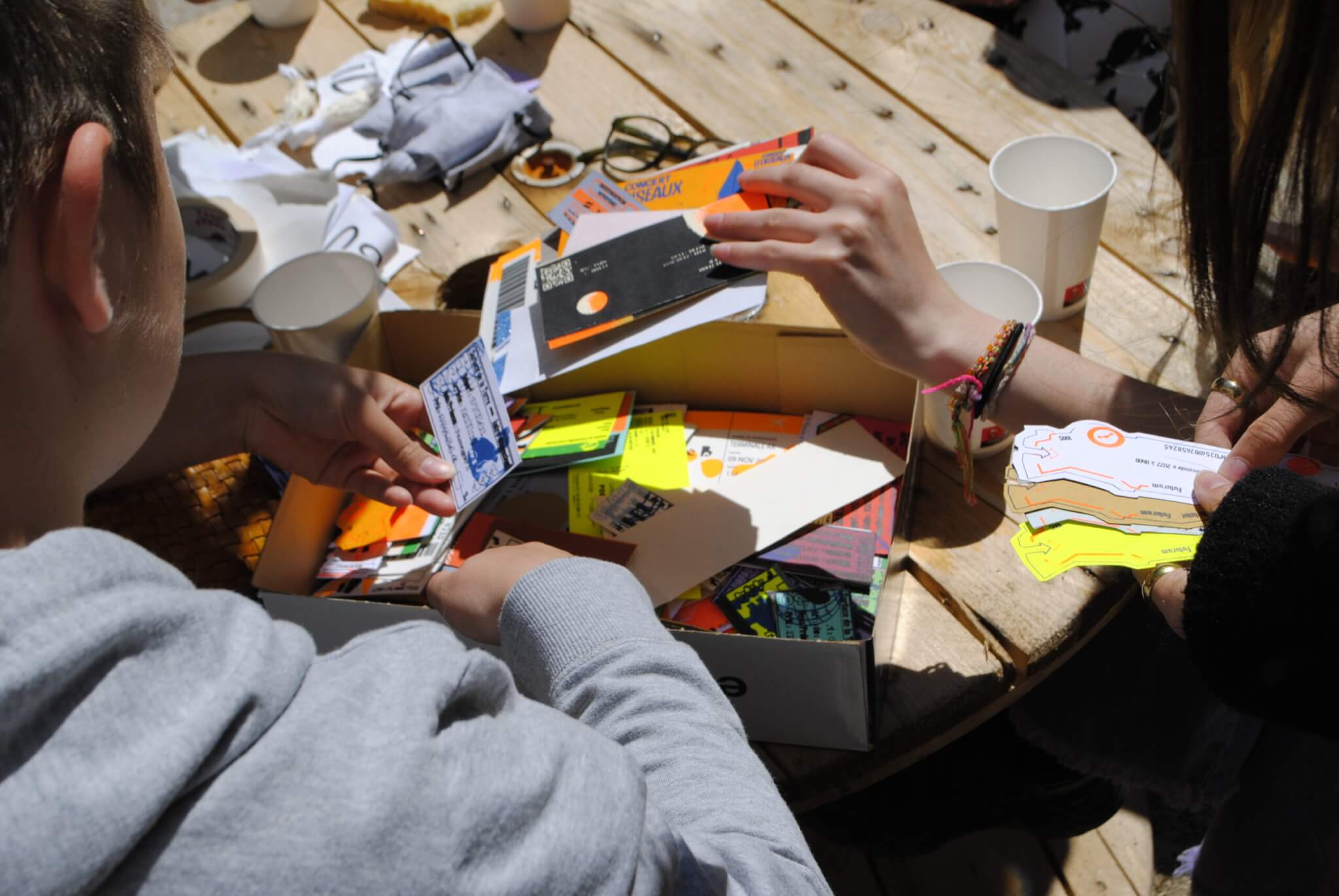Description
Marianne went to meet high school students, proposing them to work around the theme of the escape, while leaving them a large part of appropriation. Very quickly, this questioning turned to the future and the projection of the teenagers in the famous “world after”: to leave, to escape is good… but sometimes, it is necessary to have the courage to stay! How can we face together the problems that we are facing? How do teenagers project themselves in the world that is taking shape? What could be their way to face the ecological crisis? Each class developed different answers. In spite of a very heavy climate, a mixture of uneasiness following the confinement, of climate worries, of war… it is with benevolent, voluntary high school students, having a furious desire to get out of the water, that Marianne has developed several artistic projects.
The art students of the Pasteur high school in Besançon and Marianne have imagined and silk-screened a multitude of fictitious transportation tickets, in order to make us think about global warming. Postcards of utopian or dystopian landscapes of the future have also been imagined.
Les élèves ont imaginé des scénarios pour les disséminer prochainement dans l’espace public et dans leur lycée afin d’amener une dernière dimension interactive à leur projet.
Action
These workshops were conducted within the framework of the Visual artists in high school program proposed by the Burgundy-Franche-Comté Region. Through this program – and with the partnership of the DRAC and the DRAAF – the Regional Council of Franche-Comté aims to arouse the curiosity and encourage the initiatives of high school students by meeting artists and discovering places of creation and artistic dissemination.
Three approaches are approached during the residency: the encounter with a work through the discovery of a creative process, the artistic and cultural practice and the construction of an aesthetic judgment. Having begun with a visit to Bien Urbain, the objective is to bring the students to discover the field of urban arts, as much through sensitivity as through practice.
Biography
Her artistic practice – performative – is influenced by critical theories, micro-sociology and civil disobedience practices. Inventing alternative uses and sensitive spaces in the “commons”, deflecting power relations, generating forms of complicity: this is what drives her approach. Gestures often discreet seek tipping points, divert, short-circuit, turn around. Marianne composes shifts or a stake in play, towards a new sensitive deal. Her work is mainly based on in situ interventions and writing feeds her posture. An approach carried out in the hope of releasing a moment of debate, a way of making emerge a latent polemical energy. These interactions try to highlight our ambivalences, to link the opposites.
Photos credits
Marianne Villière, Johanna Romary, Jade Bruchard, Chloé Cura.

